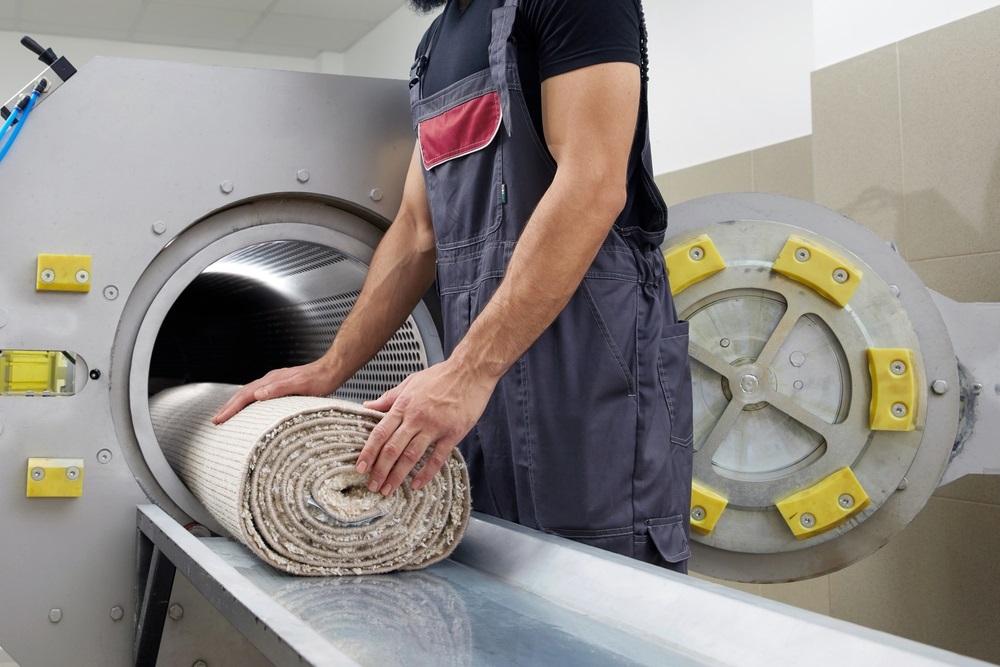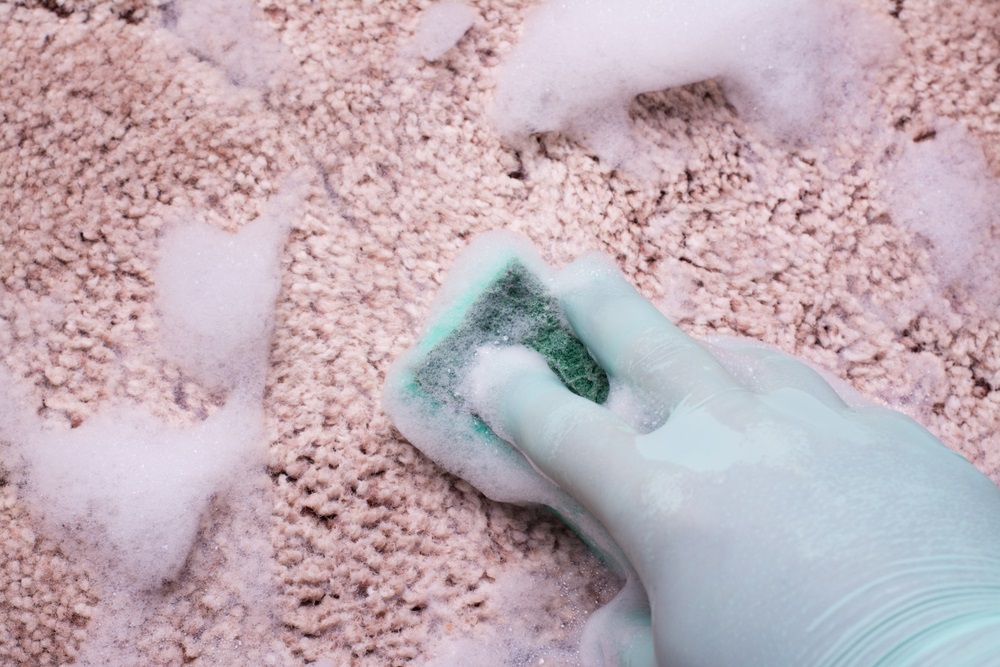
Choosing the Right Rug Cleaning Method: A Comprehensive Guide
Choosing the right rug cleaning method is crucial to maintain the beauty and longevity of your rugs. Rugs are investments that add character and warmth to our living spaces. However, they accumulate dirt, stains, and odors over time, necessitating a thorough cleaning. This comprehensive guide will explore various cleaning methods, helping you decide on your cherished floor coverings.
Understanding Rug Fibers and Their Cleaning Needs
Before delving into specific cleaning methods, it’s essential to understand the type of fibers your rug is made of.

Different fibers require distinct cleaning approaches to prevent damage and ensure effective cleaning. Let’s explore common rug fibers and their cleaning needs.
Natural Fiber Rugs
Natural fibers like wool and silk demand gentle cleaning methods to preserve their integrity. Avoid harsh chemicals and high-temperature cleaning, as these can lead to discoloration and damage.
Synthetic Fiber Rugs
Rugs made from synthetic fibers, such as nylon or polyester, are more resilient. However, they still benefit from regular cleaning to maintain their appearance and texture.
Popular Rug Cleaning Methods
Now that we’ve covered the basics let’s delve into popular rug cleaning methods and their pros and cons. There are several popular methods for cleaning rugs, each with its own advantages and suitability for different types of rugs and situations. Here are some common rug cleaning methods:
Steam Cleaning
Steam cleaning offers several advantages, making it a popular choice for maintaining cleanliness in various settings. One notable benefit is its effectiveness in removing stubborn dirt and stains, providing a thorough and deep cleaning experience. This method tackles visible grime and reaches into the fibers to eliminate hidden contaminants.
Furthermore, steam cleaning can kill bacteria and allergens, creating a healthier and safer environment. This makes it particularly advantageous for individuals with respiratory concerns or allergies, as the process helps to create a hygienic living or working space.
An additional merit of steam cleaning is its versatility, as it is suitable for cleaning natural and synthetic fibers. This adaptability enables a thorough strategy for sustaining a variety of materials, accommodating various fabrics commonly found in homes or commercial spaces.
However, it’s essential to consider the drawbacks associated with steam cleaning. One notable limitation is the longer drying time compared to alternative cleaning methods. This extended drying period may inconvenience users who require a quicker turnaround, especially in busy households or high-traffic areas.
Dry Cleaning
Dry cleaning presents a set of advantages and disadvantages, making it a distinctive approach to maintaining cleanliness, particularly for delicate items. One notable advantage is the quick drying time associated with dry cleaning. This expedited drying process benefits those who require a swift turnaround, enabling users to promptly reintegrate cleaned items into their daily lives.
Moreover, dry cleaning is particularly well-suited for delicate natural fiber rugs. This cleaning method’s gentle nature helps preserve the integrity of delicate materials, ensuring that intricate patterns and sensitive fabrics remain unharmed during the cleaning process.
However, it’s crucial to acknowledge the limitations of dry cleaning. One notable drawback is its potential inability to effectively remove deep-seated stains. While the method excels at surface-level cleaning, it may not penetrate as deeply as other techniques, leaving stubborn stains requiring more intensive treatment.
Shampooing
Shampooing, as a carpet cleaning method, has advantages and disadvantages, making it a viable option for certain cleaning scenarios. One notable advantage is its deep cleaning action, which effectively tacks stubborn dirt and heavily soiled rugs. The shampooing process involves a thorough cleansing that reaches deep into the fibers, making it particularly beneficial for surfaces with significant dirt accumulation.

Moreover, shampooing is well-suited for heavily soiled rugs, providing a comprehensive solution for situations where standard cleaning methods may fall short. The shampoo’s robust cleaning action helps revitalize and refresh carpets that have endured substantial wear and tear.
However, it’s essential to consider the drawbacks associated with shampooing. One notable concern is the possibility of residue being left behind after cleaning. If not properly removed, this residue may contribute to a sticky or stiff feel on the carpet surface, potentially causing discomfort and attracting more dirt over time.
DIY Rug Cleaning Tips
Here are some DIY rug cleaning methods to keep your rugs looking new if you’d rather take a hands-on approach:
Vacuum Regularly
Regular vacuuming prevents dirt from settling into the fibers.
Spot Cleaning
Address spills immediately with a mild detergent and water solution.
Sunlight Exposure
Natural sunlight can help disinfect and refresh your rugs. Hang them outdoors on a sunny day.
FAQs
How often should I clean my rugs?
It is advised to have regular cleaning every six to twelve months,
depending on foot traffic and exposure to dirt. However, high-traffic areas or homes with pets may benefit from more frequent cleaning, possibly every 3 to 6 months.
Can I use regular household cleaners on my rugs?
While it may be tempting to use common household cleaners, it’s best to avoid them. Many contain harsh chemicals that can damage rug fibers and alter colors. Stick to cleaners specifically designed for rugs to ensure their longevity.
Is steam cleaning suitable for all rug types?
While generally effective, steam cleaning may not be suitable for delicate natural fiber rugs like silk. Always check the manufacturer’s recommendations or seek advice from an expert cleaner to ascertain the most suitable technique for your particular carpeting.
Can I clean my rugs at home, or should I hire professionals?
DIY cleaning is suitable for routine maintenance, but professional services are recommended for deep cleaning. Professionals have the expertise and equipment to ensure a deep cleaning without the risk of causing harm to your carpets.
How can I prevent my rugs from fading?
Rotate your rugs frequently to guarantee uniform fading and wear. Consider using window treatments or UV-protective films to minimize sunlight exposure in areas with valuable or sensitive rugs.
Conclusion
Choosing the right rug cleaning method is pivotal for maintaining the beauty and lifespan of your rugs. Whether you do it yourself or hire an expert, understanding your rug’s fibers is the first step. Regular cleaning enhances the aesthetics and contributes to a healthier living environment. Our Experts in Quality Area Rug Cleaning are here to guide you to choose the best method for your cherished rugs. Contact us!
